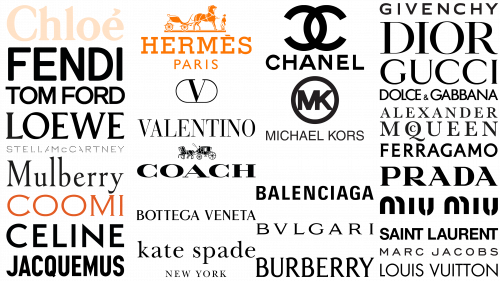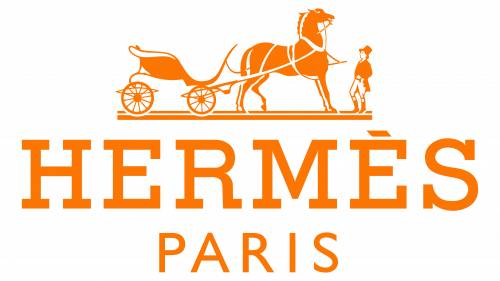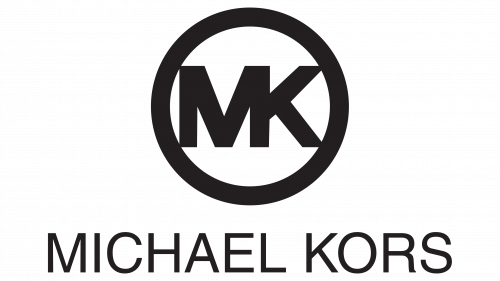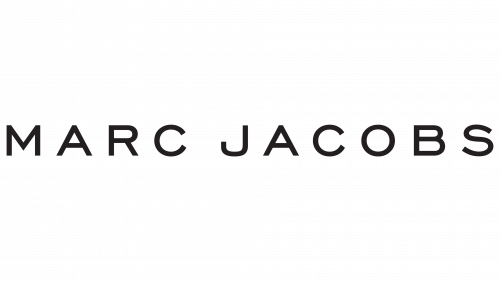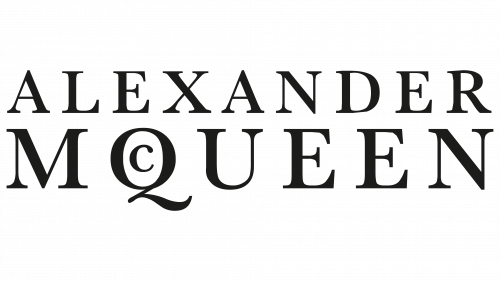In luxury fashion, logos adorning designer bags are not just decorative graphics. They serve not only to distinguish the product among analogs in a busy market. Well-known bag manufacturers know that a spectacular logo can resonate deeply with the target audience, conveying feelings of wealth, sophistication, and fashionability.
Often found on many products as decorative elements, logos carry a responsibility beyond mere recognition. World-class designers use these emblems to enhance the perceived value of their products, emphasize brand equity, attract consumer attention, and consequently increase sales.
This study promises intriguing discoveries for those interested in the origins of world-famous designer handbag logos and the reasons for their immense appeal. Diving into the annals of fashion history reveals the subtleties and elaborate techniques used to create brands that continue to fascinate.
Today, we will focus on exploring the stories and strategies behind some of the most iconic emblems of handbag brands. This will reveal the intricacies of the art of branding and demonstrate how a seemingly simple design can be filled with layered meaning.
Familiarity with designer handbag logos
In the bustling world of fashion, a huge number of handbag brand emblems are emerging from globally recognized design hubs such as Italy, France, the UK, and the USA. Each emblem associated with famous handbag brands has its own special charm that reflects the ethics of its creator.
By studying the emblems of designer handbags from different parts of the world, one can find some commonalities. Most fashion houses, especially those that produce designer handbags, carefully design their logos to convey accurate information.
Targeting an audience with refined tastes and significant purchasing power, these brands gravitate toward design elements that exude elegance and sophistication. Minimalistic designs, often dominated by monochromatic color schemes or monograms, are often found on bags and accessories. Such simple yet impactful elements are an aesthetic choice and serve a broader purpose.
In the world of high fashion, adaptability is crucial. The clarity and simplicity of these emblems, devoid of unnecessary complexity, allow them to easily adapt to different materials. Whether embossed on luxurious leather, printed on tote bags, or embroidered on plush fabrics, the logos retain their appeal and instant recognizability.
Minimalism is as much about aesthetics as it is about functionality. The ease of adapting such logos to different materials allows fashion brands to consistently convey their corporate identity regardless of the medium or type of accessory. This enhances brand memorability and increases the visibility of the emblem against competing designs.
Famous names and logos of bag brands around the world
The world of luxury fashion has seen the emergence of many famous names and logos of handbag brands. With all the variety these companies offer, not all of them focus exclusively on designer handbags. Each fashion house has managed to carve out its own niche for a unique range of accessories.
There are many emblems and monikers associated with the best designer bags from around the world. More than just design elements, these symbols are often a testament to a brand’s heritage, commitment to craft, and unique style.
While many of these famous brands present an extensive catalog that includes a variety of fashion items, their accessory collections, especially handbags, often stand out and receive special recognition. What sets them apart is their combination of innovative design with impeccable craftsmanship.
These symbols and names adorning luxury designer handbags do not only signify brand affiliation. They symbolize the unwavering standards of quality and aesthetic elegance that these brands uphold in the competitive fashion industry.
Louis Vuitton (France)
Since its founding in 1854, Louis Vuitton has gained a significant place in the global luxury fashion sector. Considered a pioneer, this respected brand has always been at the forefront, offering avant-garde designs ranging from designer handbags to accessories and apparel that cater to the tastes of today’s discerning clientele.
Louis Vuitton’s signature style is embodied in a clean and crisp sans-serif font that epitomizes sophistication and minimalism. However, the heart of the brand’s visual representation is the iconic “LV” monogram. This emblem, often found on most premium handbags, has become an unmistakable symbol of luxury, quality, and heritage.
The enduring appeal and commitment to excellence have contributed to Louis Vuitton’s growing clientele.
Chanel (France)
Among the iconic names in French fashion, Chanel is a beacon of timeless style and elegance. Founded by the pioneering Coco Chanel, the brand changed the fashion world’s perception of luxury bags and accessories in the 20th century. The emergence of Chanel sparked a wave of innovation that changed the norms of fashion.
At the core of Chanel’s visual identity is its emblem – two intertwined “C” letters. This monogram representing the initials of the brand’s founder is what Chanel is known for. This symbol has become synonymous with luxury, and when people see it, they immediately associate it with the high-quality craftsmanship and design that the brand is known for.
Although the monogram is present on most Chanel bags and emphasizes its individuality, there are cases when the brand chooses a more discreet approach to branding. In such cases, a simple, sophisticated wordmark appears on the products, alternatively reflecting the essence of the brand. The balance between the symbolic monogram and the minimalist word mark reflects Chanel’s mastery of combining traditional values with modern appeal.
Through its brand elements, be it the iconic monogram or the more discreet word mark, Chanel is constantly reinforcing its position at the top of the fashion industry.
Gucci (Italy)
Synonymous with haute couture, Gucci has a rich history that dates back to its founding by Guccio Gucci. Apart from the founder’s surname, the brand name itself happens to echo the colloquial word “good,” which gives it another appeal.
Gucci takes a minimalist approach in its main logo, consisting of a pure wordmark. Each letter in it is placed spaciously, which gives the design simplicity and elegance. In addition to this core design element, the brand features the iconic monogram depicting the crossing letters G. This motif is often found on leather goods, including handbags and other premium accessories.
Hermes (France)
Hermes, whose name is firmly in the annals of luxury fashion, began its journey in 1837. Founded by Thierry Hermes, the brand was created to produce high-quality equestrian harnesses designed for the elite. This equestrian heritage has had a profound impact on the brand’s identity, creating its distinctive logo.
The Hermes logo captures the essence of its early days, featuring a horse-drawn carriage. This emblem, similar to the Coach emblem, is a testament to its fundamental heritage. The brand’s name, rendered in a distinct serif font, gives it elegance and authority. The logo design features motifs from the famous artwork “Le Duc battle,” further emphasizing the brand’s connection to art and heritage.
Although Hermes has expanded its product range beyond harnesses, the essence of the logo remains unchanged.
Prada (Italy)
A titan of the global fashion industry, Prada first appeared on the fashion scene in 1913, cementing its reputation as an innovator in Italian fashion. The famous brand got its name from the name of its creator Mario Prada. Prada has written its name in the annals of fashion history thanks to its unique skill in manufacturing leather bags and producing exquisite ready-to-wear collections.
The Prada logo is a testament to its heritage and ethos, departing from the common trend of simplifying word emblems. The typeface, despite its simplicity, is characterized by pronounced sharp edges and clear detailing, evoking a sense of authority and grandeur. This thoughtful design emphasizes the brand’s commitment to excellence; this unique emblem sets it apart from luxury brand logos.
Saint Laurent (formerly known as Yves Saint Laurent, France)
Since its founding in 1962, Yves Saint Laurent, often abbreviated as YSL, has been the epitome of French luxury fashion. As a brand, Saint Laurent has established itself as a pioneer in the fashion industry, offering collections ranging from ready-to-wear to sophisticated haute couture art, as well as fine footwear and leather goods that reflect the brand’s ethos of elegance and sophistication.
Saint Laurent’s visual identity is multifaceted. Although the main emblem is a clear text logo, no less admired and recognized by many is another symbol – the brand’s monogram. This peculiar design, which skillfully intertwines the letters “YSL,” is executed in a classic serif font, creating a sharp but harmonious contrast to the simpler main wordmark. This combination of symbols, each with its own weight and meaning, reinforces the brand’s legacy on the global fashion scene.
Christian Dior (France)
Christian Dior, often abbreviated as “Dior,” is known worldwide as a manufacturer of coveted handbags and exquisite accessories. The company’s name, reflecting the legacy of its founder, captures the essence of the brand when it comes to branding: simplicity and elegance reign supreme in Dior’s approach.
The company logo is a testament to timeless elegance. The capital letters of the serif typeface draw attention with pronounced lines, and soft curves create a sense of femininity and grace. The interplay of strength and delicacy symbolizes strength and sophistication – traits that are in line with the brand’s ethos.
This carefully crafted emblem adorns all Dior luxury goods, from handbags to other coveted items, emphasizing the rich heritage of the fashion industry.
Fendi (Italy)
Fendi is a paragon of Italian craftsmanship, famed the world over for its avant-garde designs and luxury handbags. Its history dates back to 1925, when Adele and Edoardo Fendi embarked on a fashion journey, introducing a brand that, over time, became synonymous with luxury.
Although the brand offers a plethora of fashionable goods, its bags, emblazoned with the iconic Fendi logo, remain in a league of their own. This emblem, despite the lack of embellishments in the design, leaves an indelible mark on the observer’s memory. Favoring a bold and expressive wordmark, Fendi uses a sans-serif font.
The simplicity of this logo, combined with the brand’s reputation for quality products, reinforces its place in the pantheon of luxury fashion houses.
Balenciaga (Spain)
Hailing from France, Balenciaga is synonymous with luxury and has left an indelible mark on the fashion world since its founding in the early 1900s. With roots dating back to 1919, the brand is characterized by luxury and a striking visual style.
Balenciaga uses two different designs to represent its brand identity. The unadorned wordmark is an austere, bold typography that speaks to the brand’s commitment to clarity and precision. With clean lines and printed letters, this design exudes a confident modern elegance, perfectly in keeping with the brand’s status in the world of haute couture.
Complementing this is the elaborate monogram. It represents two crossed “B” letters, reflecting the brand’s ability to seamlessly blend tradition and modernity. More than just a visual element, the monogram is a sign of the brand’s dual commitment to its historical heritage and contemporary design.
These designs convey a compelling story of the brand’s journey. Like the brand’s collection of high-end handbags, these emblems exude authority, influence, and grandeur, epitomizing the status of a titan of fashionable luxury.
Givenchy (France)
Givenchy, hailing from France, is a hallmark of luxury fashion. Created by Hubert de Givenchy in 1952, the brand has carved a niche for haute couture and luxury accessories, often showcasing itself as a sign of luxury to prominent figures in the entertainment and fashion worlds.
The brand’s visual identity is primarily defined by a distinctive word mark that has gained worldwide recognition. Along with the main emblem, Givenchy is also known for its iconic monogram. This signature pattern, consisting of a crossed quartet of the letters “G,” is often found in the brand’s range of high-end handbags. These elements add to the aesthetic appeal of the products and emphasize the brand’s rich heritage and its commitment to creating timeless pieces. Each piece adorned with these symbols reflects Givenchy’s heritage and its position in the world of luxury fashion.
Burberry (United Kingdom)
Hailing from the United Kingdom, Burberry holds its rightful place in the pantheon of luxury handbag brands. Founded in 1856, it not only carries the weight of tradition but is also one of the longest-lasting companies in the fashion world. Since Thomas Burberry started this legacy, the company’s brand identity has undergone several evolutions.
The Burberry emblem exudes an aura of modernity and elegance, firmly establishing it in today’s fashion world. The design of the emblem is a perfect blend of simplicity and sophistication. The vivid word mark, characterized by concise serifs, is the centerpiece of the corporate identity.
This symbolism reflects the essence of Burberry – a harmonious blend of heritage and cutting-edge design principles. The balance between time-honored tradition and a commitment to modern aesthetics is evident in the company’s products and branding.
Celine (France)
Founded in the heart of France in 1945, the prestigious fashion house Celine has become synonymous with the epitome of French elegance and luxury. Founded by Celine Vipiana, the brand bears her name as a sign of devotion to her ideas and craftsmanship. The evolution of the brand can be traced not only to its fashion collections but also to its branding elements.
In its early days, the Celine logo was intricate, embodying the detailed essence of the era. Over time, as fashion trends shifted towards minimalism, the brand’s visual identity changed as well. Nowadays, the Celine logo is an elegant and modern mark, devoid of unnecessary elements. The logo reflects the brand’s commitment to modernity and simplicity with a bold sans-serif font.
This branding transformation reflects the brand’s ability to adapt to new conditions, allowing it to remain relevant in the ever-evolving field of fashion.
Dolce & Gabbana (Italy)
Dolce & Gabbana is a beacon in the world of fashion, recognized worldwide. Founded in 1985 by the dynamic duo Stefano Gabbana and Domenico Dolce, the brand has since carved out a niche for itself by offering an extensive collection of fashionable clothing and coveted accessories.
The Dolce & Gabbana emblem, despite its understated design, says a lot about the brand’s character. It radiates confidence and craftsmanship. Symbolic is the inclusion of a small ampersand in the emblem, located between the two names. It emphasizes the deep partnership and synergy between the two visionary designers, embodying the essence of their collaboration and the birth of the famous D&G label.
Valentino (Italy)
Hailing from Italy, Valentino is a beacon of luxury and elegance in the fashion industry. Founded in 1960 by its namesake, Valentino Garavani, the company has thrived ever since, adapting to changing trends while maintaining its inherent style. Under the leadership of Pierpaolo Piccioli, current Creative Director, the brand continues to resonate with its longtime fans and a new generation of fashion lovers.
The Valentino emblem, characterized by an original design, easily combines classic and modernity. A serif font is used as the word mark; the symbols are placed close together, which creates a sense of freshness and relevance. Above it is a tasteful emblem: a minimalist letter “V” enclosed in an elliptical frame. This design choice enhances the visual presentation of the brand.
Bottega Veneta (Italy)
Bottega Veneta (Italy) dates back to 1966. It is a venerable Italian brand that is highly respected in the world of haute couture. Despite its diverse range of ready-to-wear, accessories, and footwear, the brand is particularly known for its luxury handbags.
The Bottega Veneta logo reflects the essence of the brand, understated yet powerful. The emblem is an elegant word mark typed in uppercase font. Each letter symbol of the emblem is carefully crafted and reflects the brand’s unwavering commitment to quality and meticulous attention to detail.
The balance between the letters in the logo is far from accidental; it reflects the brand’s commitment to a harmonious blend of functionality and artistic expression. This choice of logo design is a clear testament to Bottega Veneta’s commitment to excellence in every endeavor, be it handbag making or fashion design.
The carefully balanced letters are a thoughtful design choice that reflects the overall philosophy of the brand, which values meticulous craftsmanship in every product.
Michael Kors (USA)
Since the debut of its first women’s collection in 1981, the Michael Kors brand has quickly risen to the pinnacle of high fashion, earning the admiration of prominent figures in the world of entertainment and social life. The name Michael Kors is synonymous with an extensive line of handbags, accessories, and other premium products featuring the brand’s signature style.
The basis of the Michael Kors logo is a word mark, usually in a white color scheme. This minimalist design solution allows to focus attention on the brand name, emphasizing its value and reputation. In addition to the main word mark, the brand uses a separate but complementary monogrammed design. These are the letters “MK” combined in a visually striking combination and surrounded by a bold circular border, creating an instantly recognizable design element.
The coexistence of these two different but harmonious logos adds complexity to the brand’s identity, providing different opportunities for consumer recognition and engagement. On the other hand, the black and white wordmark embodies the classic elegance that has long been associated with the Michael Kors brand. Collectively, these emblems convey the brand’s appeal in the annals of fashion history.
Marc Jacobs (USA)
Marc Jacobs, founded in 1984, is a major brand in the world of luxury fashion. This iconic brand, named after its founder, chose a minimalistic and clear sans-serif design for its logo.
The Marc Jacobs emblem, in its simplicity, resonates with many due to its understated elegance. Not only does the font convey the ethos of the brand, but also the careful design of the space between the letters. This careful design choice gives the logo a sense of stability and solidity, further reinforcing the brand’s message of timeless sophistication. For decades, this logo has epitomized not only fashion but also consistent quality and style.
Mulberry (United Kingdom)
Founded in 1971, Mulberry is a beacon of British fashion, specializing in rich leather goods and exquisite handbags designed primarily for discerning women. Roger and Joan Soule were behind the creation of this fashion empire. Their choice of brand name was carefully considered to appeal to a predominantly female audience.
The Mulberry emblem, like many other luxury brands, is characterized by understated elegance. The monochromatic design, done in black and white, showcases a classic serif font. Barely visible highlights or protrusions at the end of each letter emphasize the font’s traditionalism while reflecting its modern sensibility. The design of the emblem reflects the brand’s ethos: combining rich heritage with a modern aesthetic of popularity.
Coach (USA)
Prominent in the American fashion scene, Coach New York was one of the first handbag brands in the United States. The brand’s journey is interesting, and the unique logo is a testament to its rich history.
The emblem depicts a horse-drawn carriage, symbolizing the brand’s deep roots in a bygone era of aristocratic elegance. It is a visual image that reflects Coach New York’s heritage and emphasizes its connection to luxury and tradition.
The brand’s signature mark is represented by pronounced, bold lines. This design choice is not just aesthetic; it carries a certain meaning. The pronounced font embodies the ideals of confidence, stability, and authority. In these design elements, Coach New York seamlessly blends the traditional and the contemporary, demonstrating its enduring influence on the ever-evolving field of fashion.
Chloe (France)
Originating in the heart of French fashion, Chloé has forged its own identity despite not adopting the name of its founder, Gaby Aghion. The name chosen, echoing modern femininity, symbolizes a brand created for the modern woman. Chloé has gained great recognition, especially due to its harmonious combination of modern trends and classic handbag design.
The brand’s signature style extends not only to its products. The Chloé logo reflects its unique approach to fashion. The classic serif font returns to traditional design principles, while the often-used delicate peach hue adds a modern femininity. This combination of classic and modern is a testament to the brand’s ability to preserve tradition while constantly evolving to reflect contemporary tastes.
Kate Spade (USA)
Founded in 1993 by Andy and Kate Spade, American-born Kate Spade has made its mark in the luxury fashion sector. Operating under the umbrella of Tapestry Inc., it continues to attract attention for its offerings that cater to a contemporary aesthetic, often featuring bold colors and distinctive patterns.
Despite the brilliance inherent in its product designs, the brand favors a more understated approach to its logo. The Kate Spade logo is a minimalistic word mark typed exclusively in lowercase letters. Another element that makes the logo stand out is the subtle hint of its roots: a reference to the word “New York” located right below the brand’s name. The design and branding of the brand combine modern dynamics and time-honored traditions.
Ferragamo (formerly known as Salvatore Ferragamo, Italy)
Ferragamo, or Salvatore Ferragamo as many call it, is the epitome of Italian luxury, rooted in the heart of Florence. Known primarily for its exquisite leather goods and shoes, the brand has since continued to delight with its silk goods and a variety of high-end fashion accessories.
The brand’s visual style reflects the prevailing norms in the fashion world: a monochromatic theme combined with a clear word mark. While the design is unassuming, the emblem exudes self-confidence. The font, in bold capital letters, has thin serifs that give it a classic elegance. Each piece bearing this symbol is a testament to Ferragamo’s heritage and commitment to fashion excellence.
Tom Ford (USA)
A household name in the fashion world, the Tom Ford brand has grown in popularity since its acquisition by Estee Lauder in 2022. With a focus on bespoke and off-the-rack clothing, the brand offers a combination of exclusivity and affordability.
Prior to creating his brand, Tom Ford collaborated with Gucci, which left an indelible mark on fashion. The brand’s emblem, which has a unique charm, is reminiscent of the iconic Gucci symbol. Using a word mark that exudes confidence, elegance, and boldness, the brand has successfully captured the attention of fashion lovers around the world. The robust and refined design speaks of the brand’s commitment to excellence and its consonance with contemporary style trends.
Loewe (Spain)
Founded in 1846, Loewe is a testament to the enduring appeal of luxury fashion. The brand, which specializes mainly in leather goods, clothing, and fragrances, is known to be admired by the world’s elite, celebrities, and royalty.
An important part of the brand’s identity is its emblem, which many people recognize immediately. The Loewe emblem stands out in the world of designer logos with its pronounced serifs. This classic font, mostly in monochromatic colors, adorns many luxury handbags, a sign of the brand’s heritage and commitment to quality.
Every detail of Loewe’s design, from the emblem to the products, exudes a sense of timeless elegance blended with modern trends.
Miu Miu (Italy)
Part of the famous Prada fashion empire, Miu Miu targets customers looking for high-fashion offerings but not the premium price tags often associated with its parent brand. The name “Miu Miu” comes from the joking nickname of Miuccia Prada, the innovator behind the brand’s creation.
The Miu Miu emblem differs from the traditional design of other luxury handbag brands. The logo is characterized by bold lettering; some symbols have unconventional breaks, which makes it fresh and avant-garde.
The brand’s individuality, embodied in its logo, reflects the innovative spirit and fashion approach of Miuccia Prada herself. Occupying a unique niche in the oversaturated luxury fashion market, Miu Miu effectively bridges the gap between luxury and affordable haute couture, providing a balance that continues to appeal to consumers around the world.
Stella McCartney (United Kingdom)
Stella McCartney, a well-known name in affordable luxury fashion, has a unique style that sets it apart from others. The brand has carved a niche for itself with its diverse range of handbags, accessories, and other products.
In an industry where similar designs are often found, Stella McCartney’s decision to take an innovative approach to branding sets it apart. Abandoning traditional typography, each letter of the logo is initially composed of multiple dots. The dot design is a testament to the brand’s ability to combine sophistication with avant-garde elements in fashion.
Alexander McQueen (United Kingdom)
Hailing from the UK, Alexander McQueen is a towering figure in the fashion industry, distinguished by the eye-catching yet simple logo that adorns his creations. The emblem, designed in a minimalistic color scheme, carries a touch of creativity and sophistication.
The distinguishing feature of the emblem is the serif letters, which have emphasized curves and shapes. This design choice not only adds elegance but also provides instant recognition. A particularly original aspect of the logo is the insertion of the letter “C” from the word “McQueen” inside the letter “Q.” This subtle but effective design maneuver shows the ingenuity of the brand and its ability to combine the traditional with the modern.
The choice of design elements for the Alexander McQueen logo reflects the brand’s ethos of combining timeless elegance with avant-garde innovation.
Bulgari (Italy)
Originating from Italy, the Bulgari brand, with the unique spelling “Bvlgari,” has carved a niche for itself in the global luxury market. Known for its exquisite jewelry, sophisticated clothing lines, alluring fragrances, and various luxurious accessories, this brand represents elegance and luxury. A distinctive feature of the brand is its name, which pays homage to its founder by adopting the Latin spelling of Sotirios Voulgaris’ surname. Translated from Greek, this surname means “Bulgarian”.
One of the brightest elements of the company’s corporate style is the elaborate logo. For all its simplicity, a closer look reveals its genius. The deliberate replacement of the letter “U” with the letter “V” in the logo not only gives it a Roman flavor but also ensures that the brand stays in the minds of onlookers. This innovative design made the handbag logo memorable and symbolized the brand’s commitment to creativity and distinction.
Jacquemus (France)
Appearing in the world of luxury fashion in 2009, Jacquemus quickly took its place among the world’s leading handbag brands. Despite its relatively recent emergence, the brand’s influence is undeniable, especially in creating contemporary designs that resonate with modern women.
The bags offered by the brand carry a sense of modernity and functionality, which is a testament to the growing needs and desires of today’s customers. The design ethos is based on the personal experience and vision of the brand’s founder, Simon Porte Jacquemus. This individuality is evident in the brand’s emblem, where the unique combination of sharp angles and crisp, confident letters epitomizes the founder’s distinctive style.
Jacquemus’ rapid ascent in the fashion industry is a testament to the brand’s ability to understand and cater to modern tastes, bringing a personalized approach to them.
Coomi (India)
Emerging from the echelons of fashion design, Coomi stands out for its exquisite bags and jewelry, as well as its distinctive signature style. With many fashion houses gravitating towards word logos, Coomi uses this tactic to convey its essence. It is the choice of color that sets the brand apart.
Departing from the traditional monochrome palette that dominates the industry, Coomi opts for a bold shade of orange. This bright shade is not only eye-catching but also embodies the vibrancy of the brand and its desire to break out of the box.
The decision to use such a bright color shows that the brand is confident in its uniqueness and is ready not to follow but to lead. In this color solution, Coomi easily combines tradition and modernity, which indicates a progressive approach to clothing design.
Symbolism and Meaningful History of Logos of Famous Bag Brands
Logos of famous designer handbags, as you can see from the above examples, are not just artistic symbols. They carry the weight of corporate identity, history, and essence that distinguishes these fashion powerhouses from others. Over time, the names of famous handbag brands and their associated emblems acquire significant value, cementing their place in the fashion lexicon.
Organizations of the highest caliber around the world recognize the power of a memorable name combined with an eye-catching logo. This combination differentiates a brand and resonates deeply with the target audience. That’s why pioneering companies carefully collaborate with skillful designers to create logos that evoke both a visual and emotional response.
Even the most minimalistic logos listed here are filled with deep meaning. Whether it’s an indication of a brand’s rich heritage, a testament to its reliability, or a simple display of refined elegance, each logo tells a unique story about the brand it represents, imprinting it on the minds of fashion lovers around the world.
